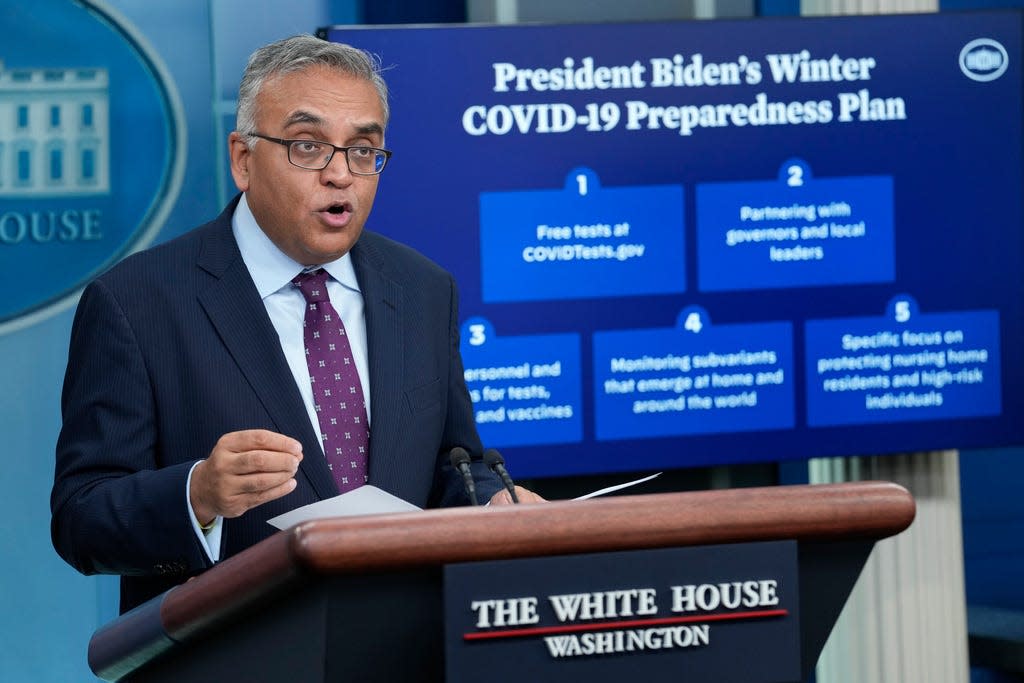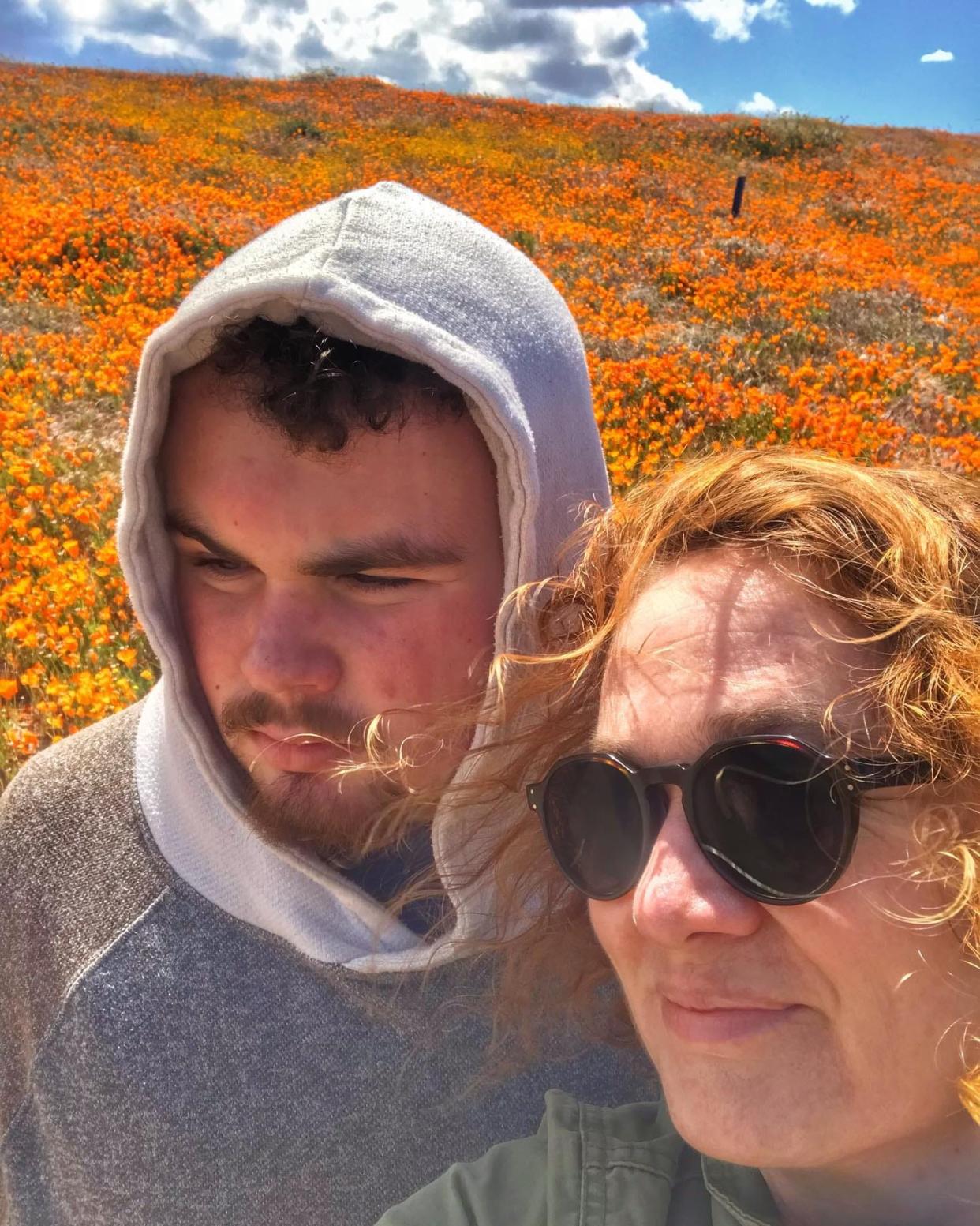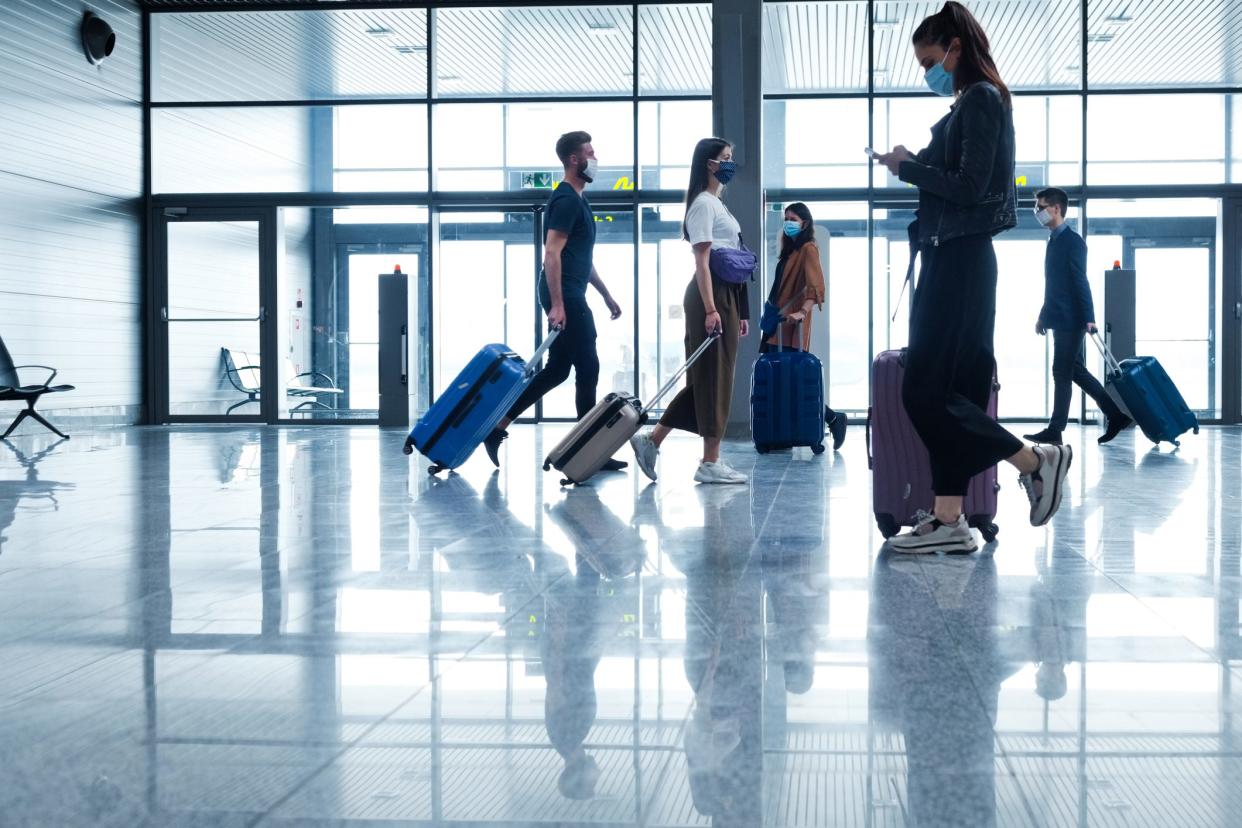Why travelers with disabilities worry about Biden's end to COVID public health emergency
The Biden administration is set to terminate the public health emergency for the coronavirus at the end of the day Thursday. Melinda Utendorf, who has fibromyalgia and is considered immunocompromised after starting chemotherapy for stage 4 bile duct cancer, says it feels like a slap in the face.
While COVID-19 case counts are down, the pandemic is far from over for many people with disabilities, some of whom continue to mask, social distance and avoid travel.
Health experts warn that the virus can still be a risk, especially for those with disabilities who may have suppressed immune systems or other underlying health conditions. Advocates for the disabled community worry that ending the pandemic’s emergency status will make it more difficult to access resources.
“(The disabled community) is talking about that and how ridiculous it is,” Utendorf told USA TODAY. “People are still dying and just feels like nobody cares about it at all.”
Vaccine requirements International travelers to the US will be able to skip proof of COVID vaccine, WH says
Travelers you won't find at airports: Omicron impedes travel for people with disabilities
What happens when the public health emergency ends?
Once the public health emergency for COVID-19 ends, insurance providers will no longer be required to waive costs for COVID-19 tests, according to the Centers for Disease Control and Prevention.
People with Medicare who are enrolled in Part B will have lab-conducted costs covered if they are ordered by a health professional, but there will be no more free over-the-counter tests.
State Medicaid programs must provide coverage without cost sharing for COVID-19 tests until Sept. 30, 2024. After that, coverage will vary by state.
Private insurers will no longer be required to cover over-the-counter or laboratory COVID-19 tests without cost sharing, but the Department of Health and Human Services says it is encouraging private insurers to continue covering tests.
“This puts a lot of lower-income people at a greater disadvantage,” said Amy Gaeta, a disability rights activist and postdoctorate at the University of Wisconsin-Madison who studies disability and technology and has nerve damage in one leg as well as invisible disabilities. “This is especially concerning given that so many disabled people are low-income, especially if they're on disability welfare benefits.”
The HHS says access to vaccinations and certain treatments like Paxlovid and Lagevrio will “generally not be affected” by the end of the public health emergency ‒ at least for now.
Stockpiles for COVID-19 vaccines and treatments are expected to run out this summer or fall, White House COVID-19 Response Coordinator Ashish Jha said earlier this year. When that happens, Jha said COVID-19 vaccines will remain free for people covered by public or private insurance.

As for treatments, insured patients will likely have to start paying out-of-pocket to cover at least part of the cost once stockpiles run dry. Medicaid will continue to cover treatments without cost-sharing through Sept. 30, 2024. After that, coverage and cost-sharing will vary by state.
"The uninsured, of course, will not be able to get vaccines for free and treatments for free under the regular insurance system," Jha said. "We're working on a plan on that."
The shift will also affect how the U.S. reports COVID data since the CDC will no longer have the legal authority to require all labs to report coronavirus testing results.
Also this week, the Biden administration is set to end vaccination requirements for international air travelers. The change goes into effect at 12:01 a.m. EDT on Friday.
"Considering the progress that we have made, and based on the latest guidance from our public health experts, I have determined that we no longer need the international air travel restrictions that I imposed in October 2021," Biden said in a Tuesday proclamation.
Title 42 expiration date nears: What we know about the ending of a pandemic-era border policy
US COVID data reports will change: Here's what you need to know.
What the public health emergency's end means for the disabled
Thursday’s shift follows the end of the national emergency for the virus in April. It was originally expected to end Thursday alongside the public health emergency.
The decision to end the pandemic’s emergency status has garnered backlash from advocates for the disability community – a large, diverse group, with the CDC estimating that up to a quarter of the country’s adult population has some sort of disability.
An April statement from the American Association of People with Disabilities said the advocacy group was disappointed by Biden’s decision to end the national emergency since it “perpetuates the notion that COVID-19 is no longer a threat.”
The World Health Organization is also updating its language around the virus, and last week said it no longer considers COVID-19 a global health emergency.
“The abrupt end of the National Emergency is the first step towards the elimination of resources and mitigation efforts for those who are still impacted by COVID-19,” AAPD CEO and president Maria Town said in the statement. “We are deeply frustrated and disappointed by the Administration’s ongoing rejection of the continued toll of COVID-19 and the long-term consequences, particularly on people with disabilities, aging Americans, and communities of color.”
'Making it really clear' that people with disabilities are excluded
Shannon Rosa said while the rest of the world seems ready to forget about the pandemic, the virus is still often front of mind for her family.
They’ve largely avoided travel during the pandemic because Rosa's son, Leo, is autistic and can’t wear face masks long for sensory reasons. When they do go on outings, Rosa searches for places that are open-air and tries to go when attendance rates are low, especially now that masking is rare.
“We know that people with disabilities are generally not part of the overall public consideration, but this is just making it really clear,” Rosa, who is senior editor of Thinking Person's Guide to Autism, said.

While Leo isn’t high risk, she worries about the unknown side effects of the virus and how they could affect her son. She said Leo won’t be on planes until case counts are truly contained – a factor that severely limits the family’s travel options.
“We still don't understand why (autism) has so many co-occurring conditions and we don't necessarily know if he is more susceptible, especially to new diseases like COVID that we're finding out have really unforeseen and possibly long-term effects,” Rosa said.
A 2022 CDC study estimates 20% of COVID survivors between the ages of 18 and 65 experienced long COVID, a chronic illness that has been described as a mass disabling event. The illness' timeline and severity vary, with post-exertional malaise and brain fog being two of the most common symptoms.
Utendorf said she started to travel again recently and took her first flight since 2020 last month to Virginia Beach, Virginia. Seeing so many people around her without masks made her experience a bit nerve-wracking, but she said getting the chance to see the ocean again was well worth it.
“I wasn't going to be one of those people who threw a fit and yelled at people (for not masking). It was my choice to travel,” she said. “I just tried to wear my mask and sit quietly in my seat and try to avoid people as much as possible.”

Utendorf tested negative for the virus once she returned home and is planning to visit New York with her mom and a friend later this month.
“I'm doing a lot of trips now at this point because I want to make sure to get them in,” she said.
What public health experts are saying
While the pandemic is still ongoing, there’s “no question” that the country’s COVID-19 numbers are trending in the right direction, according to David Weber, associate chief medical officer and medical director of infection prevention at the University of North Carolina Medical Center and vice president of the Society for Healthcare Epidemiology of America.
The CDC reported 1,109 new weekly COVID-19 deaths as of May 3, down from more than 23,600 the week of Jan. 13, 2021. More than 77,000 cases were reported for the week, down from a peak of 5.5 million in January 2022. Hospital admission trends are also falling, with the seven-day average down from its peak of 21,525 in January 2022 to 1,349 as of Monday.
Even so, Weber notes COVID-19 is “still a major issue” with more than 100 people in the U.S., on average, dying from the virus daily. He expects the virus will continue to be among the top five causes of death in the United States this year.
“It's still having a major impact, particularly on older individuals, particularly on younger individuals who are unvaccinated and with multiple comorbidities,” he said.
Weber, 72, said he advises his highly immunocompromised patients to continue wearing masks and noted that he himself continues to mask in public because of his age.
“It's an individual decision,” he said. “We need to let people make that decision if they so choose. And we need to realize that while the risk of COVID is dramatically lower, it's still present and it still remains a substantial cause of mortality.”

David Eisenmann, director of the University of California, Los Angeles' Center for Public Health and Disasters, said people with comorbidities or a suppressed immune system and those older than 65 who are itching to travel should ask their doctor if they are a candidate to bring along Paxlovid, a prescription antiviral medication that can help people at risk for severe disease avoid a bad outcome.
He, too, suggests masking and said wearing an N95 or KN95 mask properly can reduce individual risk.
The new variants “seem to spread more easily, but don’t seem to be more severe,” Eisenmann said in an emailed statement. “Make sure you’ve gotten your booster because it covers these new variants. If you are eligible, consider getting the second dose of the booster.”
Weber said it’s still unclear what sort of threats COVID-19 will pose in the future. It’s possible the world never again sees another major variant. It’s also possible one emerges and leads to another surge.
“We’ve not defeated COVID. It’s not going away,” he said. “It's never a question of if we see another pandemic, just the question of when.”
Best cities for disabled travelers: These 3 US destinations rank among the best.
Dig deeper:
How the US reports COVID data is about to change. Here's what you need to know.
Biden will end COVID-19 emergencydeclarations on May 11 after more than 3 years
Biden administration proposes rule changesto compensate passengers for flight delays
A European traveler was'forced to crawl' off a plane to his wheelchair
You can follow USA TODAY reporter Bailey Schulz on Twitter @bailey_schulz and subscribe to our free Daily Money newsletter here for personal finance tips and business news every Monday through Friday.
This article originally appeared on USA TODAY: COVID emergency not over for travelers with disabilities. Here's why.
